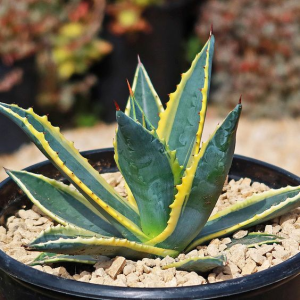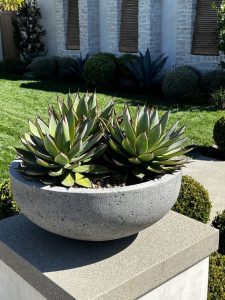- English
- Chinese
- French
- German
- Portuguese
- Spanish
- Russian
- Japanese
- Korean
- Arabic
- Irish
- Greek
- Turkish
- Italian
- Danish
- Romanian
- Indonesian
- Czech
- Afrikaans
- Swedish
- Polish
- Basque
- Catalan
- Esperanto
- Hindi
- Lao
- Albanian
- Amharic
- Armenian
- Azerbaijani
- Belarusian
- Bengali
- Bosnian
- Bulgarian
- Cebuano
- Chichewa
- Corsican
- Croatian
- Dutch
- Estonian
- Filipino
- Finnish
- Frisian
- Galician
- Georgian
- Gujarati
- Haitian
- Hausa
- Hawaiian
- Hebrew
- Hmong
- Hungarian
- Icelandic
- Igbo
- Javanese
- Kannada
- Kazakh
- Khmer
- Kurdish
- Kyrgyz
- Latin
- Latvian
- Lithuanian
- Luxembou..
- Macedonian
- Malagasy
- Malay
- Malayalam
- Maltese
- Marathi
- Mongolian
- Burmese
- Nepali
- Norwegian
- Pashto
- Persian
- Punjabi
- Serbian
- Sesotho
- Sinhala
- Slovak
- Slovenian
- Somali
- Samoan
- Scots Gaelic
- Shona
- Sindhi
- Sundanese
- Swahili
- Tajik
- Tamil
- Telugu
- Thai
- Ukrainian
- Urdu
- Uzbek
- Vietnamese
- Welsh
- Xhosa
- Yiddish
- Yoruba
- Zulu
- Kinyarwanda
- Tatar
- Oriya
- Turkmen
- Uyghur

Ko te raru me te pai o te koiora me te moni putea kano kano. Plant development and management take great attention on its pace of expansion. Many elements influence agave’s pace of growth: environmental conditions, type of soil, water availability, light, and farming practices.

Tuhinga o mua
Agave’s typical extended development cycle consists of many basic phases:
Te tiimata me te whakatipuranga uri, ka tere te tipu o te tipu whakatipuranga i raro i nga taiao e tika ana. Ko te ahua o te purapura me te taiao ka whakatau i te roa o te waahanga whakatipuranga ka maha nga marama ki te tau. Ka hangaia e te tipu nga papa rau taketake i tenei waahanga, ka tukuna e te whenua te nui o te whakawhanaketanga.
I te nuinga o te wa ka roa nga tau, koinei te waahanga nui o te whanaketanga agave. Ka tipu tonu te tipu i ona rau ka hangaia te rosette o te rau-rau i tenei wa. Ko nga waahanga o te taiao penei i te maama, te wai, me te pāmahana e awe ana i te roanga o te waa i roto i te waahanga whanui. Ka tipu pea te Agave i ona roa rau i te 10-20 cm ia tau i raro i nga ahuatanga pai; I roto i nga tikanga kino, ka nui haere te tere o tenei tere.
Ko te Agave te maha o nga tau e tae atu ana ki te waahanga pakeke, neke atu i te 10 tau. Ko tenei waahanga ko te whakamutunga o te whanaketanga tipu. I te nuinga o te wa ka uru ki te waahanga whakakitenga me te haere haere tonu i muri i te pua, ka tiimata te tipu o nga rakau puawai. I te nuinga o te waa e whakaatu ana i te mutunga o te huringa koiora, ko te putanga o nga pupuhi puawai me te tukanga puawai e pa ana ki te whakawhanaketanga o te tipu.
Calculating the agave’s growth rate
Agave’s growth rate varies according on the type and surroundings. Generally speaking, agave leaves develop somewhat slowly. Agave leaves could grow 10–20 cm annually under appropriate growth circumstances. varying agave cultivars do, however, have somewhat varying rates of growth. As a result:
I te nuinga o te wa e whakaatu ana i te tere tere tere, agave Americana (Big Agave) i raro i nga ahuatanga o te waa, ka whakanui i te roa rau i te 30 ki te 50 cm ia tau. Ko Agave Americana he whiringa rongonui i roto i te hoahoa whenua na te tere o te whanaketanga o te whanaketanga.
Ko te mata tuatahi mo Tequila, a Agave Tequilana (Blue Agave) ka whanake haere. I te nuinga o te waa, ka puta te pakari o te aranga i muri i te tekau tau. Ko te tere o te whanaketanga ka taea e tenei riihi te kohikohi mai i nga huka, pai mo te mahi i te tequila tino pai.
Agave Firifera: Ko tenei momo reanga reiti iti iti ka tipu haere. I te nuinga o te wa ka pai mo te oneone maroke me te ngoikore, ka whakaatu ano hoki i te urutau taiao.
elements influencing agave’s development pace
Many elements influence the agave’s growth rate: environmental conditions, type of soil, water availability, light conditions and farming technique.
Nga tikanga o te taiao
Usually suited to tropical and subtropical conditions, agave is a drought-tolerant plant. The range of optimal growing temperature is 20–30°C. Agave’s growth rate will be much slowed down in cold climes below this temperature range, and it may even lead to plant frostbite. Furthermore influencing the plant’s development are too high or low temperatures, therefore it is essential to make sure the temperature falls within the suitable range.
Agave can survive in dry conditions, although little dampness promotes plant development. Under a long-term drought, agave’s growth rate could slow down and the plant might even stagnate. A moderate humidity may boost plant development rate and help them to flourish normally.
Ko te Agave e whakawhirinaki ana ki te maama mo te whakaahua whakaahua me te whanaketanga pai. Ko te nuinga o nga momo agave e tika ana mo te whakatipu i raro i te ra. Ko te maama kaore e pai te heke o te whanaketanga o te tipu ka waiho te tae rau kia koma, na reira i raru ai te tipu.
Te momo o te oneone
Me utu e Agave i te oneone nui mai i te oneone. Ko te whanaketanga pai o te tipu ka whakawhirinaki ki te momona, he oneone pai-wai. Ko te wai whakaemi i roto i te paru, i te oneone ranei ka taea te pakiaka ka pirau me te awe i te kaha whanaketanga tipu tipu. Ka taea e koe te whakamahi i te oneone onepu me te waipuke tika hei akiaki i te whakawhanaketanga pai o te agave.
Ko te Agave te pai mo te whānuitanga o te pH mata o waenga i te 6.0 me te 8.0. Ko te oneone waikawa ka aukati i nga matūkai ka uru te tipu me te whakarereke i tana kaha o te whanaketanga. Ko te whakarereke i te uara pH o te oneone ka awhina koe ki te hanga i tetahi kaainga tipu pai mo te tipu me te whakaara i tana whanaketanga.
Rauemi wai
Agave is drought-tolerant and requires not regular irrigation. Root rot and a poor plant’s health might result from overwatering. Appropriately lowering the frequency of watering in dry conditions may help plants to become drought tolerant and encourage deep development of their roots. The plant stays healthily with a somewhat limited water source.
I te nuinga o te waa ka haere nga agaves ma te huri i waenga i nga tau maroke me te maroke i roto i te taiao. Ka whanake haere nga tipu i roto i te waa maroke ka tere ake i te waa ua. Ko nga tipu ka taea te whakatika ki tenei nekehanga ka tere te tipu o te ua me te pupuri i tetahi tere o te tipu puta noa i nga ra.
Taiao marama
Ko te tikanga ka hiahiatia e te agave te ra ki te pupuri i nga reiti whanaketanga i waenga i te ra me te atarangi. Ka taea e nga tipu te whakauru atu ki te whakaahua whakaahua i te maama tonu, na reira e whakatairanga ana i te whakawhanaketanga. Ko te tere o te tipu o te tipu ka tino heke iho i te atarangi o te semi-atarangi, na reira e awe ana i te whanaketanga o nga rau me nga ahuatanga whanui o nga tipu.
Te whakahaere me te maara
Fertilisation: The right fertilisation will speed agave’s development. Fertilisers must have nutrients such nitrogen, phosphorous, and potassium if we are to grow plants. Excessive fertilisation, however, can harm health and result in inadequate plant development. Depending on the growth stage and demands of the plant, the correct dosage of fertiliser will maximise its rate of development.
Ko te whakaiti i nga rau kowhai ka awhina i te whakawhanaketanga o nga mea hou. Ko te tapahi ano hoki ka awhina i te tipu kia mau tonu te ahua me te kaha. Ko te whakakore i nga rau kua oti te pakaru, te pakaru ranei ka awhina i te tipu ki te whakamahi i te kaha me te akiaki i te whakawhanaketanga tere o nga rau hou.
Hangarau kia whakanui ake i te tipu tipu o te agave
Ko nga kaiahuwhenua o Agave ka nui ake i a raatau tipu tipu ma te whakamahi i nga tikanga e whai ake nei:
Waihangahia te tipu haere tika.
Kia mahara ki te whanake i te pāmahana tika te aukati i te rangi makariri ki te tipu. I roto i nga waahanga frogid, ka mahia pea nga mahi whakamarumaru penei i te whare kōtuhi, ka whakarato ranei i nga puna whakakao.
Ko te whakahaere i te haumākū: I roto i nga tikanga maroke, ka piki ake te piki o te haumākū ka taea te akiaki i te whanaketanga tipu pai. Ko te miihini makuku me te riringi wai ranei ka awhina ki te whakaara i te orokuku o te taiao.
Tohua te whenua tika.
Select well-drained soil to prevent water accumulation’s effect on the roots. To increase drainage, one might add sand or another amendment to the soil.
Hei whakapumau ko te oneone kei roto i te waahanga e tika ana, hurihia tana pH i runga i nga tono o te tipu. Ko te kotakota, ko te maniua waikawa ranei kia huri tetahi i te pH o te oneone.
Te tiki i te tika
Hurihia te maha o te whakamakuku i runga i nga taiao hei aukati i te waipuke me te pakiaka pakiaka. Ko te whanaketanga pai o te tipu ka tiimata te waa maroke i waenga i te whakainu mo te oneone.
Hoatu maramarama nui.
Kia mahara ka nui te ra o te agave ki te akiaki i te whakaahua whakaahua pai me te reanga whanaketanga. I roto i te atarangi, whakaaro ki te huri i te tipu ki te waahi ra ki te taapiri i te maama maamaa ranei ki te whakapiki i te whakamarama taiao.
Whakakorehia te whakamahi i nga tikanga pūtaiao.
Te whakamahi i te rahinga tika o te tongi tika i runga i te wahanga me nga tono o te tipu hei aukati i nga kino o te tipu kaha. Whiriwhiria te tongi puhoi hei whakarite i te tipu ka whiwhi i te kai-roa e hiahiatia ana.
He maha tonu nga wa
Ko te whakaari i nga wa katoa ka awhina i te tipu kia noho ora, kia whakaongaonga hoki i te whakawhanaketanga o nga rau hou. Nga rau kowhai. I te tapahi, whakamahia nga taonga koi, horoi hei aukati i te whakato i etahi atu.

Kano kano‘s growing rate is a complicated process influenced by many elements. By knowing these influencing elements and using suitable optimisation techniques, the development rate and condition of agave may be much enhanced. Various agave varieties have distinct growing traits, hence they should be grown under the requirements of certain types. Agave may not only be beneficial in the ecology but also provide substantial financial rewards by means of scientific cultivation and maintenance.



